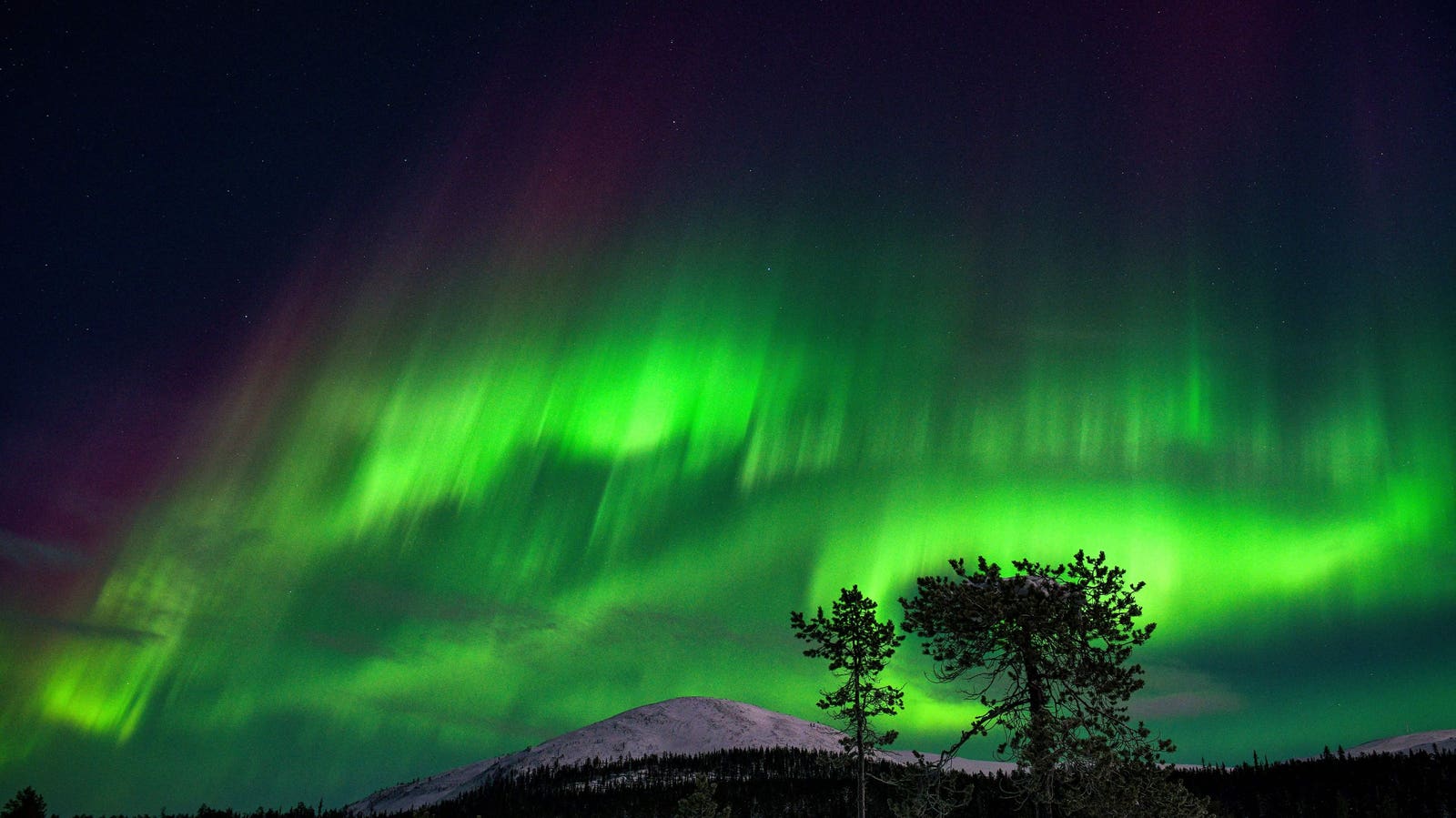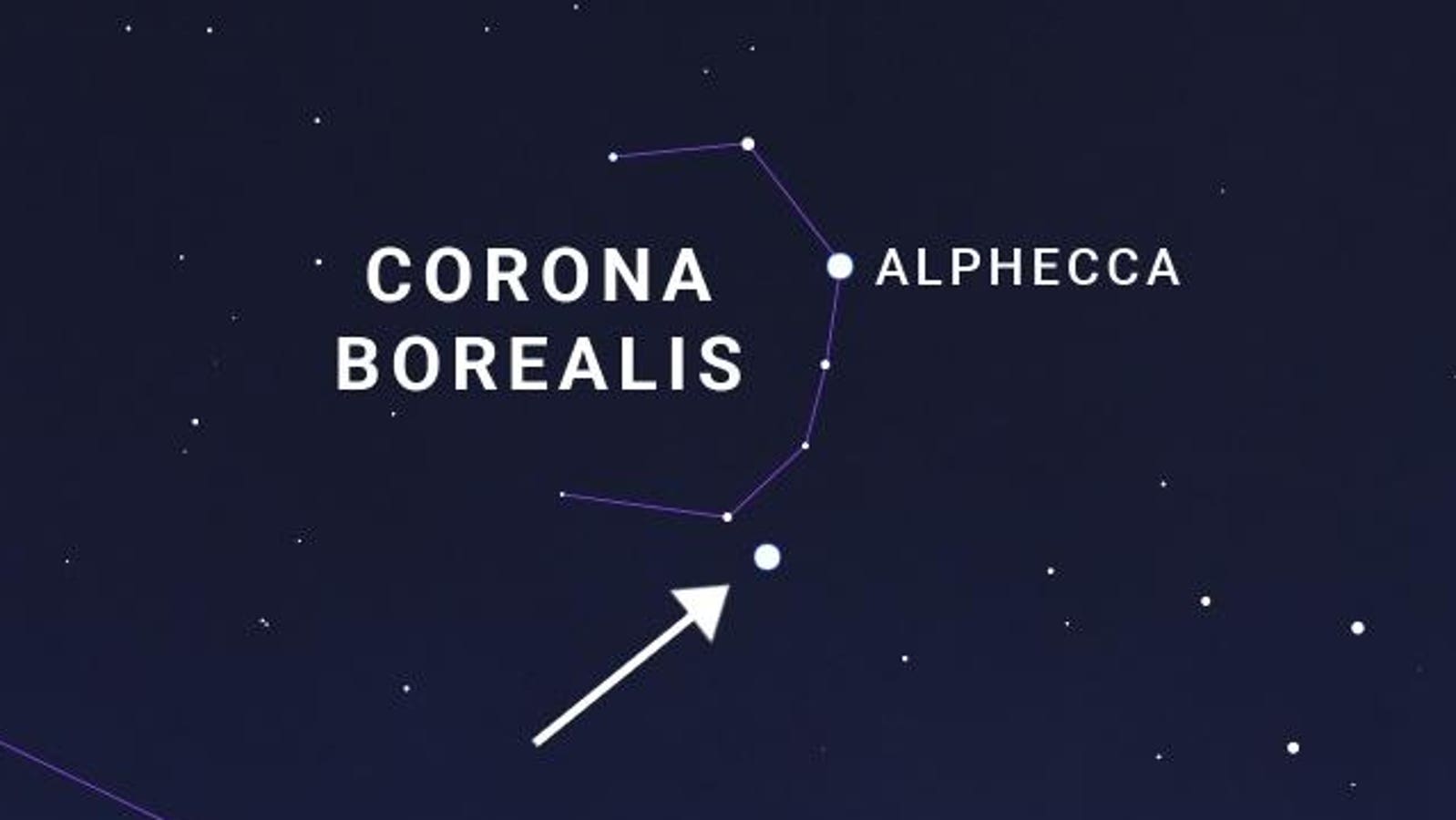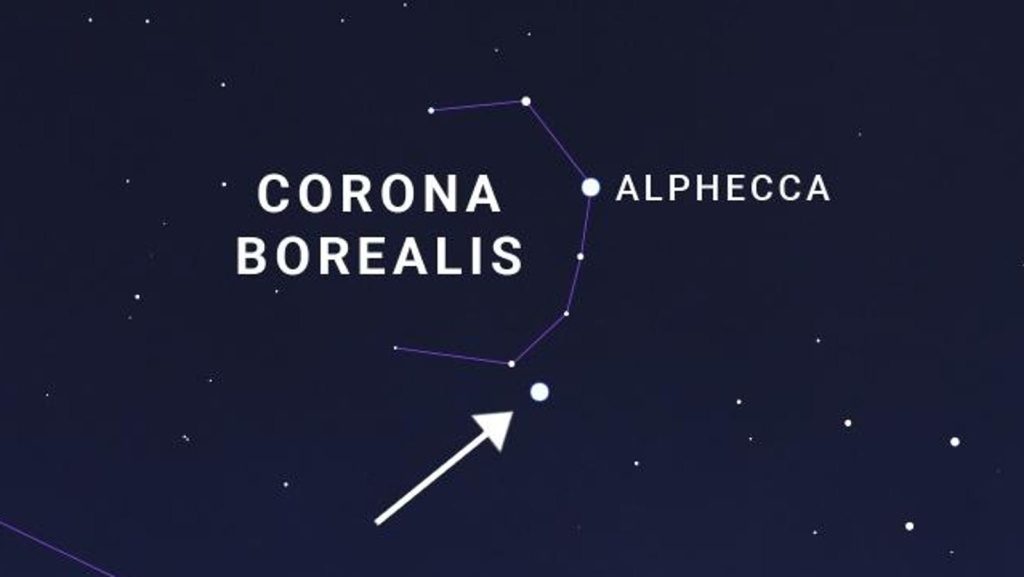Topline
A number of states across the northern U.S. may be able to see the northern lights Sunday night into Monday morning as a geomagnetic storm rolls in, according to a forecast from the National Oceanic and Atmospheric Administration.
The northern lights may be visible as far south as Pennsylvania, Iowa and Oregon because of a strong … [+] geomagnetic storm rolling in Sunday night.
Key Facts
The aurora borealis forecast for Sunday night has a Kp index of seven on a scale of nine, meaning the aurora will become “quite bright and active” and may be able to be seen from the northern edge of the U.S., according to NOAA.
Monday’s preliminary forecast has a Kp index of five—which can make the aurora bright and active enough that it “can be quite pleasant to look at”—meaning it will likely be visible to fewer places than Sunday, but still possible to see.
The appearance of the northern lights come from geomagnetic activity, which can lead to the collision of ions with atmospheric gasses from Earth and create auroral displays, and NOAA is predicting a strong geomagnetic storm Sunday into Monday due to the eruption of solar material.
Get Forbes Breaking News Text Alerts: We’re launching text message alerts so you’ll always know the biggest stories shaping the day’s headlines. Text “Alerts” to (201) 335-0739 or sign up here.
Where Will The Aurora Be Visible From?
NOAA predicted the northern lights may be visible Sunday night from Washington, northern Oregon, North Dakota, South Dakota, Minnesota, Wisconsin, Michigan, New York, Montana, Vermont, New Hampshire, Maine, Massachusetts; some of Illinois, Indiana, Ohio and Pennsylvania; and much of Idaho, Wyoming, Nebraska and Iowa.
The aurora forecast for Sunday night.
What Is The Best Way To View The Northern Lights?
The northern lights are best seen in dark locations away from city lights between 10 p.m. and 2 a.m. local time. It’s best to have a good vantage point with an unobstructed view looking north.
Key Background
The aurora borealis has been more visible in recent months because of the solar cycle the sun is in that it goes through every 11 years or so, and NASA predicted the frequent sightings will continue into next year. Solar activity has been busy in recent months as the sun approaches the peak of the cycle, which is expected between late 2024 and early 2026. Sunspots are expected to intensify over the next year, which could trigger more geomagnetic storms and viewing opportunities for the northern lights in the U.S., though it is difficult to predict when storms will occur.
What To Watch For
If the geomagnetic storm continues later in the week, producing more chances to see the northern lights.
Further Reading
ForbesNorthern Lights Alert: States Where Aurora Borealis May Be Visible TonightBy Arianna Johnson












